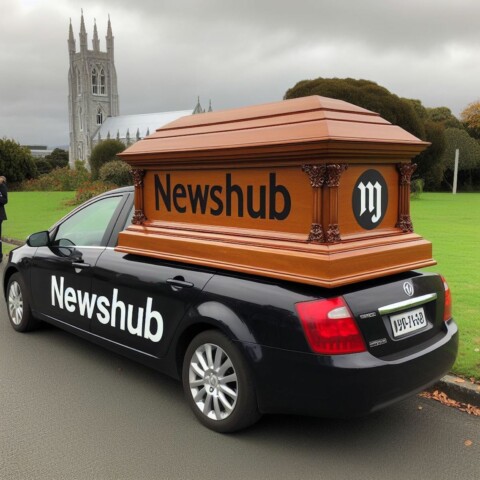 For someone who spent the first thirty years of his life in Johannesburg, South Africa, I’ve certainly lost touch with the city and I’m now more than a little tentative about getting around. Admittedly, I’ve been living in New Zealand since 2000, so time has dulled my memories of what’s where but two other factors played a part in creating this discomfort.
For someone who spent the first thirty years of his life in Johannesburg, South Africa, I’ve certainly lost touch with the city and I’m now more than a little tentative about getting around. Admittedly, I’ve been living in New Zealand since 2000, so time has dulled my memories of what’s where but two other factors played a part in creating this discomfort.
There’s been a lot of urban development in the intervening years, and many things have changed, there are new streets and new areas, and the names of suburbs and major streets have been altered. The other issue is that I was very much a Northern Suburbs boy; point me at my familiar landmarks and I’m golden, plonk me into a new area that I didn’t frequent much in the past and I’m as clueless as a tourist from Nebraska on his first visit to Jozi (as the locals call it).
Take it a step further and let’s picture me driving around Cape Town, which is one of the most beautiful cities on the planet but one that I’ve visited only three times in all my days. Ten minutes of driving and I’m more confused than the less dedicated followers of the Lost TV series, which is pretty damn confused.
One thing you don’t want to be in South Africa is lost and confused because it’s still a dangerous place. Life goes on, things seem to be getting better and most everyone is just trying to get on with their lives but there are plenty of hijackings going down on a regular basis (a perusal of the daily papers will confirm this for anyone who’s skeptical). One of the best defenses against the criminal element is maintaining a heightened sense of awareness and anyone who knows me can testify that this is one of my strengths. Friends call me paranoid, I reply with the old “just because I’m paranoid doesn’t mean that they’re not out to get me” cliché.
So for me, a GPS was a non-negotiable requirement but then I started thinking about the hassle involved with a standard in-car GPS device. Non events in New Zealand they may be but the sticky window mount, the power cable, getting the unit hooked into the mount and removing it every time I got in and out of the car, not to mention the mission involved with programming routes seemed to be too much like trouble to me. The last thing I wanted to be was distracted with my head down fiddling with cables, which seemed like a recipe for disaster (paranoid me?). I also didn’t want the mount to be stuck permanently on the screen or even for the tell-tale little circles and fingerprints to be there serving as a red rag to any lurking smash and grabbers.
So I got to thinking and suddenly clicked that I use the TomTom iPhone app in New Zealand, so I checked for a local version. An easy purchase from Apple’s App Store was followed by a trip to a local cybercafe to sidestep the dire broadband (narrowband?) speed I had where I was staying and I was up and running.
When it comes to subtlety, the TomTom app is in a class of its own – I can program the route from any place the iPhone can get GPS coverage, which is pretty much anywhere. So before I even head out to my car, the app is ready to give me directions. I’ve got a fold open case on my phone, so I just slip the top cover under the seatbelt and keep the phone on my lap, where it’s well out of sight. The phone’s built-in speaker is loud enough unless the car radio is blaring and I can glance down in a second to check the screen if I have to but I mostly rely on the voice prompts with spoken street names.
 Ok, so the app has some problems with the South African street names and suburbs but it has the same woes in New Zealand. I had to chuckle every time it told me to turn onto January Smuts Avenue, I’m sure old Jan Smuts would be less than impressed – why on earth does the app think street names might be abbreviated? In short, anything with an Afrikaans or African name gets mangled but no more so than Papatoetoe or Paraparumu does in NZ.
Ok, so the app has some problems with the South African street names and suburbs but it has the same woes in New Zealand. I had to chuckle every time it told me to turn onto January Smuts Avenue, I’m sure old Jan Smuts would be less than impressed – why on earth does the app think street names might be abbreviated? In short, anything with an Afrikaans or African name gets mangled but no more so than Papatoetoe or Paraparumu does in NZ.
Just like the NZ version, the TomTom app was reliable, quick to pick a route and able to recalculate in a flash when I did something wrong or chose to ignore it because of traffic. It doesn’t need to be connected to the Internet to do its thing, which is handy. All up, the mapping was generally very accurate but the unit seemed to get a touch dizzy around Johannesburg’s Empire Road area, where it had trouble believing that this major thoroughfare actually existed. It then sent me up the M1 highway in the wrong direction from Empire Road, not once but twice (more fool me) but it did catch a wake up and redirected me via the first suitable offramp. Other than that specific area where it was mightily discombobulated, I had no complaints about the accuracy of the maps.
There’s an optional $199 car kit, which boosts the GPS signal and has a beefier speaker to deal with road and car noise but I’ve never used it in NZ and had no need for it in SA, even when driving around skyscrapers – as they say “your mileage may vary”.
The app also kept me out of trouble to a degree by pointing out the fixed speed and traffic cameras but these days, just about every highway overpass in and around Johannesburg seems to have a camera beneath it, so I wasn’t really hustling along all that much – well except late at night, where the average highway speed climbs to something above 130kmh.
Negatives? Well there’s the fact that you could theoretically just use an in-car unit like I did with the TomTom app – carry it around with you, get the routes sorted before you get to the car, pop it on your lap with the seatbelt securing the cable etc. but good luck with that. Forget about dragging a fat in-car unit along unless you’ve got a handbag (not my style), the in-car models tend to be very slow at getting a GPS fix and you don’t really want to be standing around waiting for a signal (the TomTom gets hooked up to the satellites in seconds). Not ideal in other words, so in this admittedly rather strange set of circumstances, the app wins hands down.
Then there’s the pricing. At close to $80, the app isn’t that cheap, especially for a short trip overseas. Consider that you’ve probably already laid out the same amount on the NZ version and it starts looking very pricey especially when there are in-car units with long warranties, preloaded maps of more than one country and multi-year map guarantees. All things considered, in the South African context, I consider TomTom’s app to be extremely good value. Then again, I feel the same way about the NZ app, which I use most every single day now that I’m living in a new area – I’ve found that it usually gives me the best options for getting around, sometimes far better than the routes I’ve been using for years, it’s always on me and it’s just so effective. Not a bad deal in my book. ASHLEY KRAMER
(The App is available for download in Apple’s App Store)
















Thank you for a good review! you are awesome 🙂